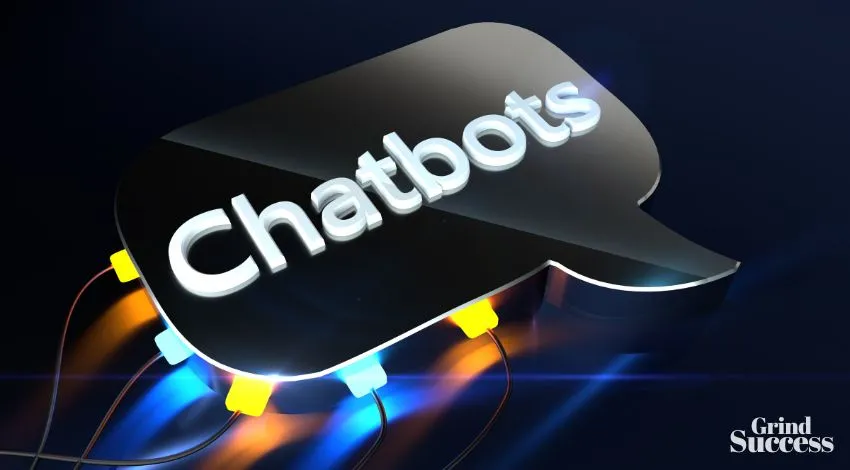How “Real” Should Your Chatbot Be?

We have various forms of AI assistants helping to complete business or everyday life tasks. An example is a chatbot – a software program that can interact with humans in a conversational manner. More companies are using chatbots to facilitate their customer service strategy.
However, many customers don’t like the lack of personalization when interacting with chatbots. On the other hand, some customers might feel chatbots that try to be too human are weird. So how does one strike the right balance between how robotic or real your chatbots should be?
What is a Chatbot?
A chatbot is a computer program that can listen and respond to human conversations. There are two types of chatbots – simple chatbots and AI chatbots.
A rule-based or simple chatbot uses a series of defined rules to understand and provide responses to customer queries.
On the other hand, AI chatbots are trained with AI techniques like machine learning and natural language processing.
They understand human speech, interpret context and objectives as well as improve over time as they gain experience.
How Advanced Are AI Chatbots Becoming?
AI chatbots are majorly used as first-response tools that greet, engage with customers, and seek to resolve issues. They are available to provide personalized responses all around the clock. Some functions of a chatbot include:
giving answers to simple queries, suggesting helpful articles, and collecting vital customer information through messages or in-chat forms.
Customer service AI chatbots are specifically trained to understand the context of a support ticket, associate questions with answers, learn from each interaction to deliver a more relevant service, choose the most suitable articles to assist a customer, and determine when to connect a customer with a live agent for more support.
AI chatbots are becoming more advanced as they learn from past customer service interactions, NLP scripts, and machine learning algorithms.
What Do Customers Like About Chatbots?
Chatbots provide fast responses to customers and increase satisfaction levels. They help to solve simple queries especially when service reps are occupied. According to some stats, 77% of customers confirm that AI chatbots are quite useful for resolving simple problems.
Many customers often get frustrated when a company takes longer to respond. That’s why 62% of customers would rather use a service chatbot for faster support than wait a few minutes for a customer service representative.
As chatbots become increasingly popular, more customers are convinced to try them out. About 88% of users had at least a conversation with a chatbot in 2022. AI bots can also resolve 90% of customer queries in 10 messages or less.
What Do Customers Dislike About Chatbots?
Customer service preferences may differ by factors such as age group or demographic, and what each individual considers to be “normal”.
For example, Gen Z or millennials won’t mind speaking to a chatbot while many Boomers prefer a phone call or email with a live agent.
Generally, some customers feel chatbots come across as being too robotic and tend to reply with generic answers. 36% of consumers also think chatbot accuracy in understanding most customer queries needs to improve. Some also want AI chatbots to resolve complex queries.
There’s also a large number of customers who do not feel comfortable while interacting with a chatbot. They simply don’t like how weird and unnatural it is to talk to a robot. Some say bots that come off as too “real” are a bit creepy.
How To Build The Right Chatbot Personality?
Now, let’s see how you can humanize a chatbot without making it uncomfortably realistic. The tips below should guide you through the process.
1. Match your chatbot’s personality to your brand personality
A chatbot may come across as professional but chatty and approachable. This can help your customers to feel at ease when engaging the chatbot. However, you need to ensure that the personality matches your brand’s personality.
2. Make it friendly and humorous (where appropriate)
When designing a chatbot, you should ensure it understands human speech and can also sound like a real person. It should be able to address customers by name, offer some casual greetings and chat friendly or witty sometimes.
3. Enhance its emotional quotient (EQ).
AI chatbots are quite intelligent but they need to understand and show some form of emotion. It should be able to utilize emojis, images, and gifs as well as interpret what it means when a customer uses sentiment in a conversation.
4. Link your chatbot to a help desk so that a human agent is available if the customer requires one.
A chatbot should be able to comprehend the user’s needs and give personalized responses. But they can’t solve every customer’s problem so it’s best to connect to a help desk system.
How To Find The Right Chatbot Software.
A good chatbot software should allow you to easily develop AI chatbots for your business. Here are some must-have features to consider when choosing a chatbot platform:
1. Bot-Builder Tool
Unless you’re very technical, you should go for chatbot software that offers no-code tools for building AI chatbots with a couple of clicks.
2. Omnichannel Deployment
It’s advisable to choose a chatbot platform that allows you to deploy on many communication channels such as websites, social media, etc.
3. Third-Party Integrations
You should make sure your online chatbot can integrate with necessary tools like helpdesk, CRM tools, accounting apps, and more.
4. Intelligent Routing
It’s best to use chatbot software that enables AI chatbots to open tickets, tag them and route them to the most qualified agent for the case.






